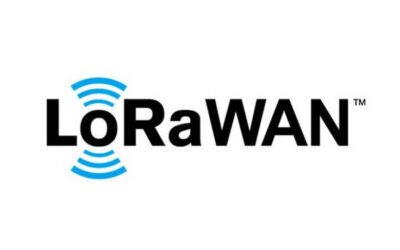What to Use: Containerization or Virtualization?

As Internet-connected devices become more sophisticated and handle a large body of data, users search for ways to capitalize on software and hardware resources. Both virtual machines (VMs) and containers employ virtualization tools that help achieve this goal. Although containers and VMs have unique features, they boost IT efficiency, increase application portability, and improve development и operations (DevOps). This article provides an exhaustive guide on containers and VMs to expand your knowledge of virtualization. You will learn about the similarities and differences of these tools and their potential application.
Containers and VMs are resource virtualization technologies that often cause confusion due to the similarity of their nature and purposes. If you have some basic knowledge about virtualization but struggle to make sense of these technologies and their application, the information below may help you fill the gaps in knowledge. After reading the article, you will be able to win the ” VM vs container” debate and answer the pressing question, ” Are virtual machines safe?”
What is a Container?
Let’s begin by defining containers. This term refers to software packages that store all the code, dependencies (e.g., system libraries), and the operating system (OS) itself to make it possible to use a microservice or an app. If you check a container diagram online, you will notice that dependencies are organized in stack levels located higher than the operating system. Due to their structure, VMs ensure smooth software use.

Containers help to virtualize the operating system (OS). Simply speaking, they maximize the possibilities of the host OS to isolate processes and regulate the processes’ access to memory, central processing units (CPUs), and desk space. It is essential to differentiate between a container and a docker. In fact, the container vs docker comparison is not correct, as Docker is simply one of the container runtime technologies. However, it is possible to compare Linux container vs docker technologies. Linux containers focus on OS containerization, compared to Docker that deals with application containerization. Containers are constantly evolving to provide users with more opportunities. For example, container-native virtualization allows running and managing VM workloads and container workloads simultaneously.
What Is a VMS?
Now that you know a bit about containers, let’s uncover the VM’s meaning. Virtual machines are software packages that allow using software instead of a physical computer to run apps and programs. If you check a VMs scheme, you’ll see that this virtualization tool contains CPU, memory, and storage, which allows it to behave like an actual computer. If you are still confused, simply remember that VM is no different than a physical computer, as it performs the same functions and can even connect to the Internet. The only difference is that it exists in a virtual space. This unique feature of VMs makes them perfect for users that want to run an OS that acts like a completely different computer.

If you are wondering, ” How many VMs can I run on a single computer?” we have great news for you. If you have a lot of RAM on your computer, you can run dozens of VMs simultaneously, making your performance super-efficient.
VMs can be particularly useful for businesses. Take, for example, full virtualization that involves VM simulating hardware to enable an unmodified guest OS to be used in complete isolation. Full virtualization is ideal for businesses that need to run multiple computers and decrease operating and IT costs. VMs also increase efficiency and productivity, boost resiliency in disaster recovery situations, and cut overall IT expenses.
Innovative solutions allow making VMs more suitable for meeting diverse business needs. For example, Synology Virtual Machine Manager (VMM) is designed to help companies create a virtualization environment by merging storage, computing, and networking resources using a single hardware platform. Virtual machine synology may be helpful in safe software testing or the enhancement of disaster recovery plans.
Containers vs. Virtual Machines: Pros and Cons
In most cases, there is no right or wrong winner in the ” containers vs virtual machines” comparison. Both technologies have their strengths and weaknesses, so you need to be aware of those to determine what tool suits your needs the best. Since you already know the answer to the ” What is VMs?” question, let’s list the pros and cons of this virtualization technology.
- Advantages of VMs. Due to their portability and flexibility, VMs possess several valuable advantages for users:
- Cost-effectiveness due to the reduced physical infrastructure. The fewer computers are needed to run the software and apps, the less energy one uses.
- High security because VMs can be run in isolation and are thus immune from any security breaches from other VMs.
- Scalability
- Speed and agility
- Interactive development
- Decreased downtime
- Disadvantages of VMs. However, like any other technology, VMs have their drawbacks:
- VMs are heavyweight, so they require a lot of storage space. How much drive space should be available for each virtual machine on a system? Each VM requires at least 20 GB of memory. Therefore, running several VMs, each many gigabytes in size, can be problematic if your computer has limited memory.
- VMs cannot fully replace physical computers because they are slower and less efficient. Therefore, many companies choose to combine VMs with physical infrastructure.
Containers, in turn, have their own strengths and weaknesses summarized below.
- Advantages of containers include the following:
- This technology is lightweight. Compared to VMs that take too much space, containers are only megabytes in size, which makes them quicker.
- The availability of pre-made containers allows users to select the needed tools and download them quickly.
- Containers are fast, lightweight, and easy to use, which allows them to simply maximize the opportunities and characteristics of the host OS.
- Unfortunately, containers are not perfect and sometimes pale in comparison to VMs.
- Unlike VMs, this technology does not provide 100% isolation, so they are less secure
- Cannot use OS other than that used by the host device
What to Use: Containerization or Virtualization?
If you cannot decide whether you should use containerization or virtualization, it’s better to determine your needs first. If you need to use several OS on a single device, you better use virtualization. If you want to take advantage of the several apps using the same OS on a single VMs system or server, containerization is the preferred option. VMs are suitable for supporting apps that require an OS’s full functionality. This may be the case when you use several apps on a server or manage many operating systems. Containers, in turn, are preferable when one wants to minimize the number of servers used for multiple services. Moreover, they can go even further by enabling application components to be arranged and scaled more efficiently.
Conclusion
If you still have questions regarding the features and application of containers and VMs, ADUK experts can help you make the right choice. Their experience in container vs VM use helps select options that best suit business and personal needs.
Recent Posts
- What Is an Exoskeleton Suit?
- Where can you use an ultrasonic motor?
- Smart Camera: System That You Can Use for a Wide Variety of Purposes
- Why Is the Smart Toothbrush Better Than a Regular One?
- Microcontrollers: An Integral Part of Embedded Hardware
- Air Quality Monitoring System: Why It’s So Important in Modern Realities





